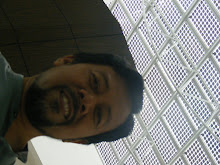100 % Coursework devided into 3 main component;
1. Assignment 1. :
22nd Nov 2012 - SUBMISSION Assignment 1
2. Assignment 2 (Building Maintenance and Energy Managemant).
29 Nov 2012 - Progress Presentation Assignment 2; 6 & 13 Dec 2012 - Assignment 2 Presentation
3. Test (may be divided into several quizzes).
22nd Nov 2012 - Test
|
|
|
|
|
|
|
|
|
|
|
|
|
|
|
|
|
Critical observation on Environmen, Energy & Built Environment .
(Individual assignment)
- Observe, investigate and records on occupant knowledge, awareness and practices related to EE in their office/workplace.
- Discuss how those behavior give an impact on Energy Consumption and Environment at large.
- Use the finding to carry out tasks given in assignment 2 (below).
22nd Nov 2012 - SUBMISSION Assignment 1
|
|
|
|
|
|
|
To understand and discuss topics related to Global, National & Local Environmental Issues due to the Human Activities and the expansion in Built Environment.
|
|
|
|
Energy Management and maintenance in Building – Building Study (group work).
- Identify building to be studied.
- Carry out energy Management program. (Refer to lecture note the scope of EMP).
- Carry out simple EE campaign, EE Campaign, energy audit and EE building investigation.
- Data analysis, report writing, Presentation & submission.
29 Nov 2012 - Progress Presentation Assignment 2;
6 & 13 Dec 2012 - Assignment 2 Final Presentation
|
|
|
|
|
|
|
1. To test student’s understanding on building design characteristic in relation to human comfort criteria.
2. To test student’s ability to conduct data collection related to building design characteristic and information, energy consumption and technologies available in building case studies.
3. To evaluate student’s ability in data analysis, syntisize and discuss energy performance of the building. on building maintenance issues.
4. To test student’s ability on doing Simple Energy Management Program in Building, data analysis and come up with EE & RE solutions and preparing report writing.
|
|
|
|
|
|
|
|
|
|
|
|
|
|
|
|
|
|
|
|
|
|
|
|
|
|
|
|
|
|
|
|
Test
22nd Nov 2012 - Test
|
|
|
|
|
|
|
To test student’s ability on several knowledge an issues relate to Climatic, EE&RE technologies and Environmental Issues
|
|
|
|
|
|
|
|
|
|
|
|
|
Group Assignment:-
Building B02, L1:
Building B02, L2:
Building B02, L3:
Building B02, L4:
Building B05, L1:
Building B05, L2:
Building B05, L3:
Building B05, L4:
Building B06, L1:
Building B06, L2:
Building B06, L3:
Building B06, L4:
Building B0x, L1:
______________________________________________
ASSIGNMENT 2:
______________________________________________
•Title/Theme: Energy
Awareness, Management and maintenance in Institutional Building (FAB).
•Objectives:
–Understanding environmental &
energy awareness.
– Understanding climatic
principles in relation to indoor climate.
–Understanding building design
characteristic in relation to human comfort criteria.
–Understanding building
maintenance issues.
–Understanding Simple Energy
Management Program in Building and preparing report writing.
Methodology
A. Energy &
Sustainability awareness.
•Background information.
•Environmental & Energy
awareness.
B. Building
Operation & Maintenance.
•Background information of the
building & its occupants
•Examine the building design and
construction in relation to climatic design principles.
•Examine the building operation,
indoor building condition and the level of comfort condition provided for the
occupant.
•Examine building maintenance
issues and identify causes and potential solutions.
C. Energy
Management Program
•Carry out energy management.
•Study the awareness level among
occupant in building.
•Carry out walk through energy
audit – you may audit the whole building or only a typical floor (verify with
your tutor).
•Calculate total energy
consumption, load apportioning and determine BEI, AEI, LEI, OEI, CEI.
•Identify & recommend
potential of Energy Saving Measures.
•Energy Audit program includes:-
–Identifying status of Energy Management or facility management structure.
–Identify any information of previous and current energy consumption recorded through meter readings.
–Identify and measure total floor area (AC & Without AC)
–Carry out audit of all types of electrical light fittings, AC & ventilation systems, office/electrical appliances used in the building.
–Identify and calculate hours of used daily, monthly and annually
–Calculate total electricity consumption, BEI, LEI, AEI & OEI.
–Calculate cost of electricity/energy consumption and Costs indexes (OCI) .
–Carry out survey on EE awareness, knowledge and practice among users.
–Introducing innovative solution to building deterioration, comfort problem and energy wastage.
–Analysis and conclusions.
Energy Efficiency Awareness program includes:-
•Energy Efficiency Awareness
program includes:-
–Carry out Interview using
questionnaire among;
•Users
•Building management staff (if
any).
–Recording through observation any
significant information related to users and building in relation to energy
consumption.
•Proposed improvement strategies
and retrofitting approach;
–Propose appropriate approach to
improve EE practices.
–Proposed innovative solution to
solve building deterioration, comfort problem and energy wastage
–Enhanced by introducing passive
and/ore active design solution.
–Other method to improve building
condition & EE.
•Output:
–Report on A4.
–Softcopy (CD) ;
•MS Words
•Slides MS
PowerPoint.
–1A2 sheets
(summary).
•Duration:
–First briefing: Week 4
–Seminar Presentation : (29 N0v, 6 & 13 Dec 2012).
–Final
submission: Week 15
•allocation: 40%








